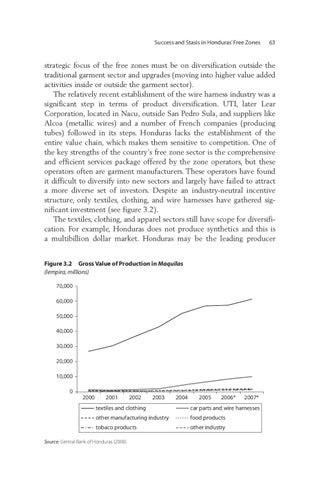Success and Stasis in Honduras’ Free Zones
63
strategic focus of the free zones must be on diversification outside the traditional garment sector and upgrades (moving into higher value added activities inside or outside the garment sector). The relatively recent establishment of the wire harness industry was a significant step in terms of product diversification. UTI, later Lear Corporation, located in Nacu, outside San Pedro Sula, and suppliers like Alcoa (metallic wires) and a number of French companies (producing tubes) followed in its steps. Honduras lacks the establishment of the entire value chain, which makes them sensitive to competition. One of the key strengths of the country’s free zone sector is the comprehensive and efficient services package offered by the zone operators, but these operators often are garment manufacturers. These operators have found it difficult to diversify into new sectors and largely have failed to attract a more diverse set of investors. Despite an industry-neutral incentive structure, only textiles, clothing, and wire harnesses have gathered significant investment (see figure 3.2). The textiles, clothing, and apparel sectors still have scope for diversification. For example, Honduras does not produce synthetics and this is a multibillion dollar market. Honduras may be the leading producer
Figure 3.2 Gross Value of Production in Maquilas (lempira, millions) 70,000 60,000 50,000 40,000 30,000 20,000 10,000 0 2000
2001
2002
2003
textiles and clothing
2004
2005
2006*
car parts and wire harnesses
other manufacturing industry
food products
tobaco products
other industry
Source: Central Bank of Honduras (2008).
2007*
